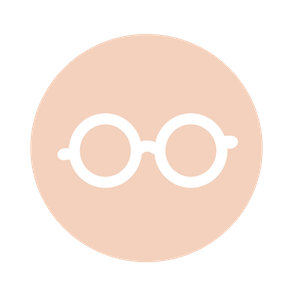Eye problems
Baby health

Healthy eyes are a critical part of kids’ development. As many vision problems that are detected early, also can be treated, make eye checks part of your child’s routine medical care.
Routine eye exams for children
- Newborns should be checked for general eye health in the hospital after birth.
- Infants should be routinely screened for eye health during checkups with their pediatrician
- Around age 3½, kids should have eye health screenings and visual acuity tests (tests that measure sharpness of vision) with their pediatrician or family doctor
- Around age 5, kids should have their vision and eye alignment checked by their pediatrician or family doctor. Those who fail either test should be examined by an eye doctor.
- After age 6, screening should be done also at school (some teacher will not notice if children see well)
Spotting Eye Problems
Signs that a child may have vision problems include:
- constant eye rubbing
- extreme light sensitivity
- poor focusing
- poor visual tracking (following an object)
- abnormal alignment or movement of the eyes (after 6 months of age)
- chronic redness of the eyes
- chronic tearing of the eyes
- a white pupil instead of black
In school-age children, other signs may include:
- being unable to see objects at a distance
- having trouble reading the blackboard
- squinting
- difficulty reading
- sitting too close to the TV
Common eye problems
These common eye problems can be detected by a vision screening and can be corrected over time.
- Amblyopia (“lazy eye”) is poor vision in an eye that may appear to be normal. Two common causes are crossed eyes and a difference in the refractive error between the two eyes. If not treated early, amblyopia can cause irreversible visual loss in the affected eye because the brain will start to ignore signals from that eye.
- Strabismus is a misalignment of the eyes; they may turn in, out, up, or down. If the same eye is chronically misaligned, amblyopia may also develop in that eye. With early detection, vision can be restored by patching the properly aligned eye, which forces the misaligned one to work. Surgery or specially designed glasses also may help the eyes to align.
- Refractive errors mean that the shape of the eye doesn’t refract (bend) light properly, so images appear blurred. Nearsightedness (myopia) is the most common refractive error in school-age children; others include farsightedness (hyperopia) and astigmatism. Some refractive errors also can cause amblyopia.
Some eye conditions, such as retinopathy in babies, need immediate attention.
Eyeglasses for children
Kids of all ages — even babies — can wear glasses. Here a few tips:
- Let your child pick their own frames
- Plastic frames are most save for children younger than 2
- If older kids can wear metal frames. Make sure they have spring hinges, which are more durable
- An elastic strap attached to the glasses will help keep them in place for active toddlers
- Kids with severe eye problems may need high-index lenses, which are thinner, lighter and more expensive
Contact lenses
Around age 10, kids may want to get contact lenses for cosmetic reasons or if they play sports. To wear contacts, a child will need to know how to insert and remove lenses properly, take them out as required, and clean them as recommended by the doctor. Note that babies born with congenital cataracts may need to wear contact lenses after cataract surgery.
Verified:
Dr. Piyawut Kreetapirom, MD. license no. 41578 (1 July 2020)



